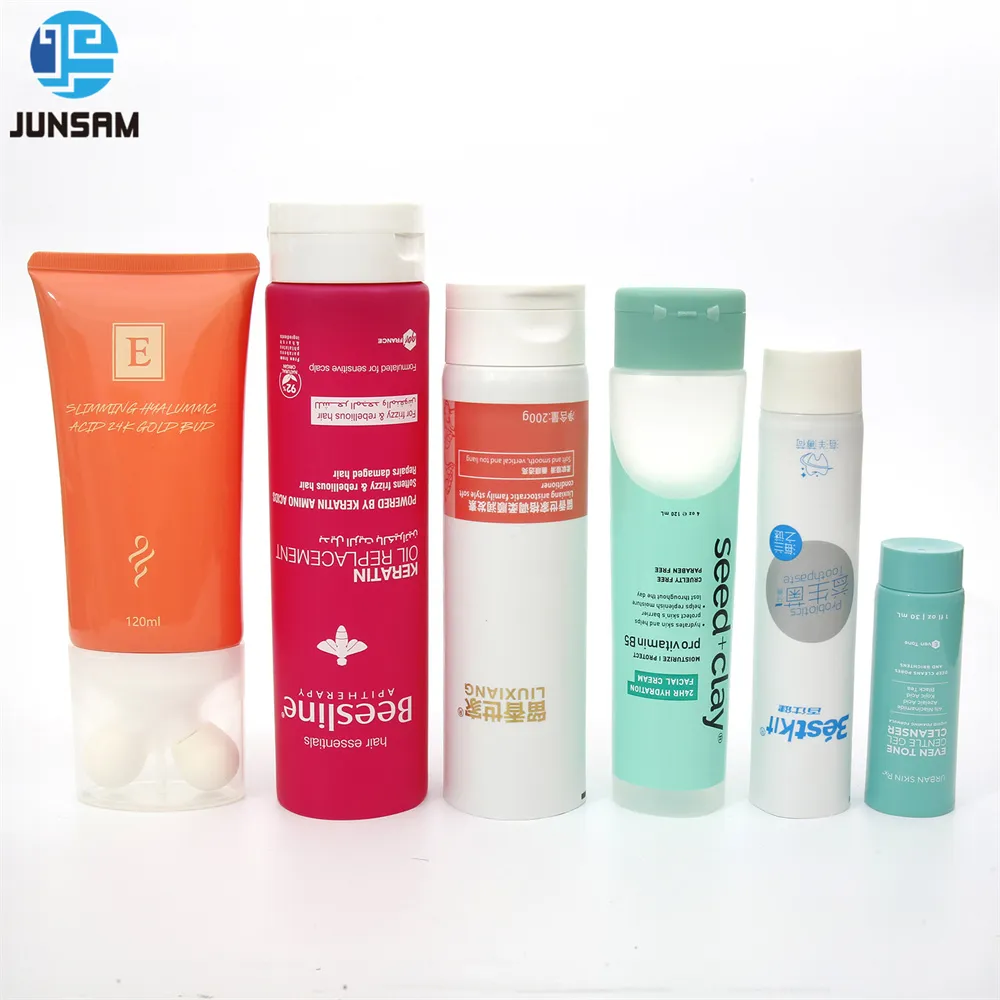Navigating the world of beauty packaging, one may wonder about the humble yet essential components that make up our favorite products. Cosmetic tubes are among the most versatile and widely used packaging solutions in the skincare and beauty industry. Today, we explore the nuts and bolts of these crucial containers, from the materials that forge them to the customization options available for brands.
Material of Cosmetic Tubes – A Closer Look
Cosmetic tubes are crafted from a variety of materials, each selected for its unique properties and suitability for different product types. Predominantly, these tubes are made from plastics like Low-Density Polyethylene (LDPE), High-Density Polyethylene (HDPE), and Ethylene-Vinyl Alcohol (EVOH). LDPE offers flexibility and is ideal for squeezable tubes, HDPE provides sturdiness, and EVOH serves as an excellent barrier to gases, preserving the product’s integrity.
The Art of Shape in Cosmetic Tubes
The shape of cosmetic tubes isn’t just about aesthetics; it’s about function and user experience. Round tubes are classic and provide structural strength, while oval tubes cater to ergonomic handling and unique shelf presence. The choice of shape can also influence consumer perception and usability of the cosmetic product.
Tailoring Tube Capacity to Brand Needs
Customization is key in the cosmetic industry, and the capacity of cosmetic tubes can be adapted to fit various product sizes simply by altering the tube length. This flexibility allows brands to offer a range of product sizes, from sample sachets to full-sized creams, meeting diverse market demands and consumer preferences.
The Multitude of Cosmetic Tube Applications
Cosmetic tubes house a plethora of beauty formulations. From the thickest of creams to the most fluid lotions, plastic tubes keep them safe and accessible. Their usage spans countless cosmetics such as toothpaste, body lotions, face masks, and makeup foundations. Brands favor them due to their light weight, portability, and ease of use.
The Functional Advantage of Cosmetic Plastic Tubes
Safety and preservation are the primary advantages of using cosmetic plastic tubes. They shield sensitive formulas from external contaminants and light, thus extending product shelf life. Additionally, their squeezable nature allows for complete product retrieval, reducing waste and enhancing customer satisfaction.
Versatile Cap Options for Enhanced Functionality
The caps of cosmetic tubes are not a one-size-fits-all affair. Brands can choose from numerous cap styles, such as flip-tops, screw-ons, and applicator tips, each providing different benefits. Flip-tops offer convenience, screw-ons provide a secure seal, and applicator tips allow for precision, proving that the cap can significantly enhance the user experience.
The Role of Printing Techniques in Branding Plastic Tubes
Printing is an extension of a brand’s identity on the product’s packaging. Techniques like offset printing, silk screen printing, and hot stamping offer different effects and advantages. Offset printing achieves high-resolution imagery, silk screen gives a tactile feel, and hot stamping adds a luxury finish. These methods help brands create a distinct presence in a competitive market.
Conclusion:
Cosmetic tubes are indispensable allies in beauty and skincare, integral to the user experience and brand recognition. Understanding their materials, shape, capacity, applications, advantages, cap options, and printing methods allows companies to craft packages that not only preserve and dispense their products but also elevate their brand identity. As the industry evolves, the innovation within the realm of cosmetic tubes continues to bloom, promising a future where functionality, aesthetics, and sustainability coexist harmoniously.


